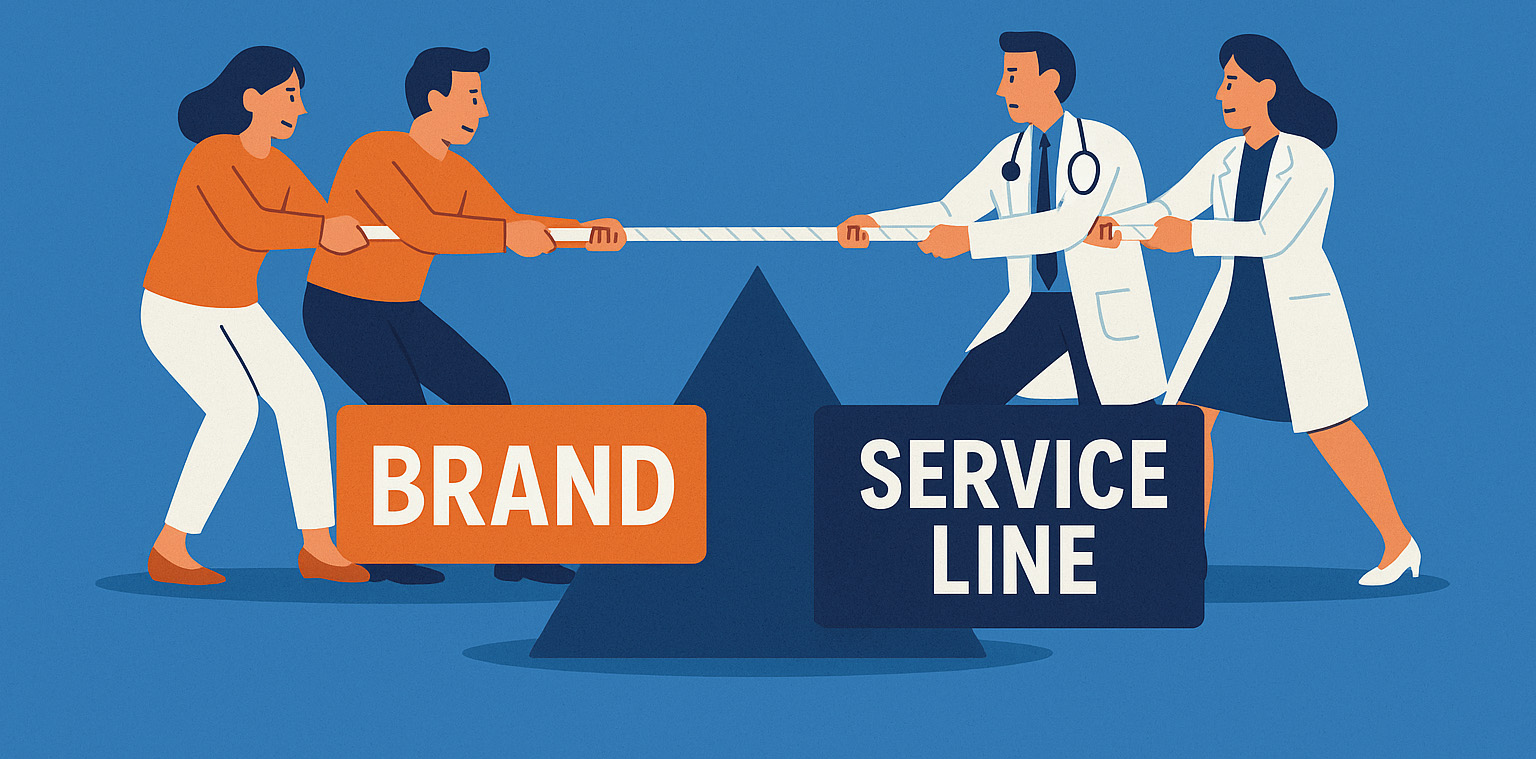In nearly every health system I’ve worked with over the past 20 years, the same conversation eventually shows up: the brand team wants to invest in long-term trust and reputation. The service line leads want campaigns that drive appointments—now. And marketing leadership is stuck in the middle, trying to make the budget (and the messaging) do both.
That tension between brand marketing and service line marketing isn’t new—but it’s getting harder to ignore.
Today’s healthcare marketers are being asked to stretch in opposite directions. On one end, they’re expected to build a trusted, unified brand that patients recognize and feel confident choosing. On the other, they’re expected to deliver hard performance metrics—especially around key service lines like orthopedics, cardiology, oncology, and women’s health.
The problem? The skill sets, timelines, metrics, and even internal stakeholders for those two types of marketing rarely align. And unless your strategy does the hard work of bringing them together, you risk failing both.
Let’s break it down.
Brand marketing is about long-term trust. It’s what gets your hospital or system on someone’s shortlist before they even know they need care. It’s about tone, reputation, values, and consistency. It lives in your website, your reviews, your press coverage, and how people feel when they walk into your facilities. Strong brand marketing is what makes a patient click your ad instead of someone else’s. It doesn’t always show up on a monthly dashboard—but it shapes every decision a patient makes.
Service line marketing, on the other hand, is about volume. It’s tied to specific goals—appointments booked, leads generated, procedures scheduled. It’s urgent, targeted, and expected to perform. And it’s often siloed, with different messaging, creative, and expectations for each clinical area.
Both matter. But they require very different strategies.
The challenge is that healthcare systems often treat them as competing priorities instead of complementary efforts. One month, the budget leans into reputation-building. The next, it’s all about lead generation. Brand teams and service line teams rarely share goals, KPIs, or planning calendars. And when budgets tighten, brand spend is often the first to go—because it’s harder to prove in a quarterly report.
But here’s the truth: your brand work makes your service line marketing perform better. It increases trust, lowers acquisition costs, and improves conversion. And your service line campaigns, when done well, reinforce the credibility of your brand—by showing that you can deliver on your promise.
The systems that get this right treat both sides as part of the same engine. They make sure every service line campaign reflects the brand voice. They align budgets to both short-term ROI and long-term trust. They bring clinical leads, marketing, and operations together early—so campaigns are grounded in both brand clarity and operational readiness.
Healthcare marketing isn’t either/or. It’s both/and.
If you’re feeling the pull between service line performance and brand visibility, you’re not alone. The key isn’t choosing one. It’s building a system that allows them to reinforce each other.
That’s the work. And if you’re doing it, you’re moving in the right direction.

